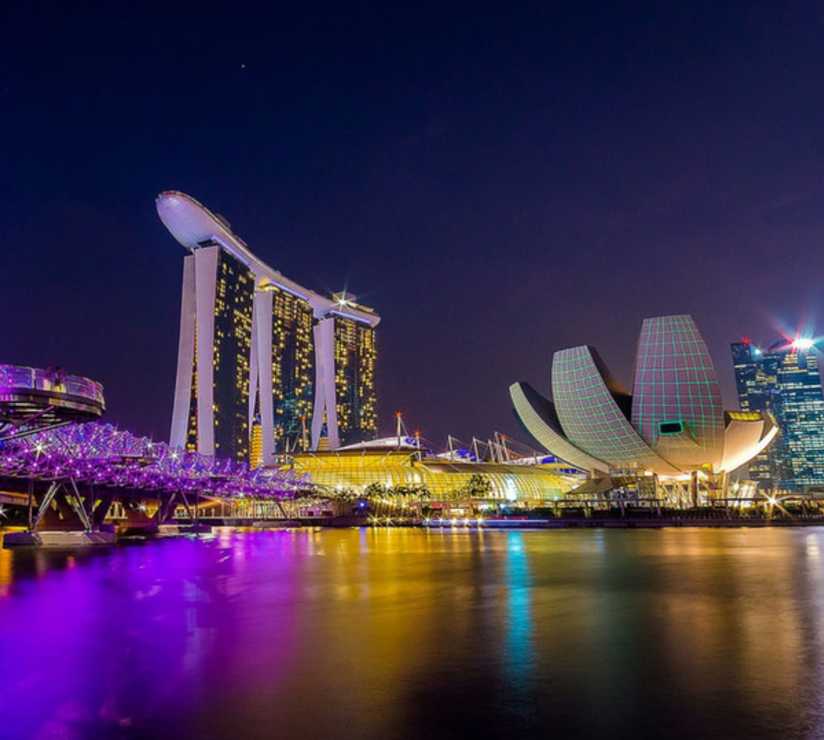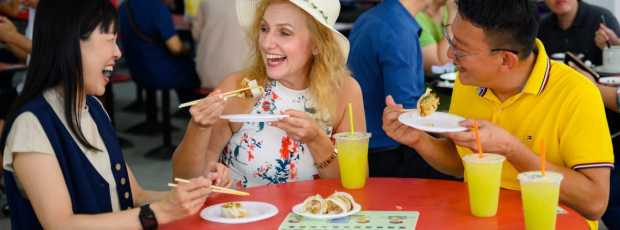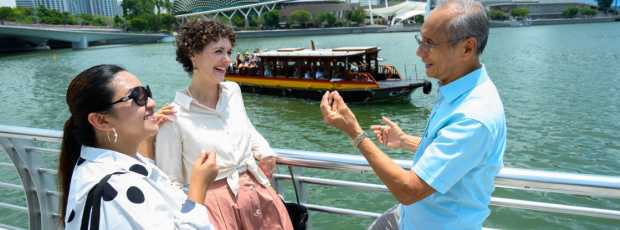Table Of Contents
- Why Little India Singapore Remains My Favorite Cultural District
- Getting to Little India: Your Gateway to India in Singapore
- What Makes Little India Singapore So Special?
- Sri Veeramakaliamman Temple: Where Devotion Meets Architecture
- Sri Srinivasa Perumal Temple: A Testament to Tamil Heritage
- Indian Heritage Centre: Where History Comes Alive
- Food Adventures: Why I Keep Coming Back to Little India
- Banana Leaf Apolo: My Go-To for Fish Head Curry
- Tekka Centre: The Heart of Little India's Food Scene
- Shopping Adventures: From Traditional to Trendy
- Little India Arcade: A Treasure Trove of Traditional Goods
- Mustafa Centre: The 24-Hour Shopping Experience
- Cultural Experiences Beyond the Obvious
- Henna Art and Traditional Crafts
- Festival Celebrations: When Little India Comes Alive
- Hidden Gems: My Personal Discoveries
- House of Tan Teng Niah: A Architectural Marvel
- Abdul Gafoor Mosque: Islamic Heritage in Little India
- Practical Tips: Making the Most of Your Little India Visit
- Best Times to Visit Little India
- Getting Around Little India
- Beyond Little India: Extending Your Cultural Journey
- My Final Thoughts on Little India Singapore
![[IMAGE: A bustling, colorful street in Little India, lined with shophouses draped in garlands and wafts of incense in the air. Filename: vibrant-little-india-street.jpg]]()
I've been wandering through Little India since I was knee-high to a grasshopper, following my grandmother as she haggled for fresh fruits and the brightest marigolds along Serangoon Road, Singapore. Now, decades later, I still find myself drawn back to this vibrant cultural enclave that pulses with the heartbeat of Singapore's Indian community.
Little India isn't just a tourist destination; it's a working-class hero neighborhood where families from Hindoo Road to Thousand Lights have built their lives around traditional trades and authentic culture.
Why Little India Singapore Remains My Favorite Cultural District
Walking down Serangoon Road, a bustling street, you'll immediately understand why locals and tourists alike gravitate toward this cultural treasure trove. The air tells stories, jasmine from flower shops, fresh produce from vendors, and sandalwood from prayer items drifting from temple courtyards along every road Singapore has to offer in this district.
Getting to Little India: Your Gateway to India in Singapore
![[IMAGE: Little India MRT station entrance with colorful signage and architectural details. Filename: little-india-mrt-entrance.jpg]]()
The easiest way to reach Little India is via the India MRT station on the North East Line. From the moment you exit Little India MRT station, Serangoon Road stretches before you like a cultural highway connecting Hindoo Road in the north to the Thousand Lights area in the south.
Looking for a private city experience in Singapore?
Explore the city with a local who plans a private day just for you; no groups, no scripts.
What Makes Little India Singapore So Special?
![[IMAGE: A mix of locals and tourists browsing through traditional Indian goods at a bustling market. Filename: little-india-cultural-diversity.jpg]]()
Little India Singapore represents more than geographical boundaries. It's where three generations of my family have shopped for festival supplies, and where I discovered that the best gulab jamun in Singapore isn't found in fancy restaurants but in humble shops along various Singapore streets in this district.
The Indian heritage here spans multiple communities from India—Tamil temples alongside Bengali sweet shops, creating diversity that reflects Singapore's multicultural approach.
Sri Veeramakaliamman Temple: Where Devotion Meets Architecture
No visit to Little India is complete without paying homage at Sri Veeramakaliamman Temple. This temple, dedicated to goddess Kali, stands as one of the oldest Hindu temples in Singapore, with intricate carvings that mesmerize visitors exploring this road in Singapore's cultural route.
![[IMAGE: Devotees offering prayers and flowers inside Sri Veeramakaliamman Temple. Filename: temple-prayers-little-india.jpg]]()
What strikes me most about this temple isn't just its beautiful architecture, but how it remains a living center of worship. The opening hours accommodate both early morning devotees and evening visitors, making it accessible for working families.
Sri Srinivasa Perumal Temple: A Testament to Tamil Heritage
![[IMAGE: The towering entrance of Sri Srinivasa Temple with detailed Hindu architectural elements. Filename: srinivasa-perumal-temple-entrance.jpg]]()
Just a short walking distance from Sri Veeramakaliamman Temple, the Sri Srinivasa Perumal Temple offers a different spiritual experience. This temple in Little India serves Singapore's Tamil community and showcases exquisite Dravidian architecture.
The Temple becomes particularly significant during Thaipusam, when devotees begin their procession from here. The temple's opening hours welcome visitors from early morning through evening prayers, whether you're seeking spiritual solace or admiring Hindu deities carved into every surface.
What if your day in Singapore was planned by someone who knows it — and you?
City Unscripted matches you with a local host who creates a private experience based on your interests, not a set route.
Indian Heritage Centre: Where History Comes Alive
The Indian Heritage Centre traces the journey of Indian immigrants to Singapore through interactive exhibits. What I appreciate most is how it contextualizes Little India within Singapore's larger narrative, showing how this working-class hero community contributed to the nation's development.
![[IMAGE: Visitors exploring interactive displays about Indian culture and history at the heritage centre. Filename: heritage-centre-interactive-exhibits.jpg]]()
The centre's opening hours make it perfect for a midday cultural break. I often recommend it to friends who want historical context before exploring contemporary Little India experiences.
Food Adventures: Why I Keep Coming Back to Little India
Food initially drew me to Little India and keeps me returning. The concentration of authentic Indian food here rivals anything in major Indian cities.
Banana Leaf Apolo: My Go-To for Fish Head Curry
Banana Leaf Apolo on Race Course Road has been my family's weekend tradition for over two decades. Their fish head curry represents a cultural institution bringing together Indian techniques with local preferences. The masala chicken here deserves special mention, perfectly spiced without overwhelming heat.
![[IMAGE: Diners enjoying their meal on traditional banana leaf plates at the restaurant. Filename: banana-leaf-dining-experience.jpg]]()
The banana leaf serving style connects you directly to South Indian traditions. The opening hours accommodate both lunch and dinner crowds, making it convenient for family meals along this popular Singapore dining strip.
Tip
We match you with the right host, not just any guide.Want to experience the real Singapore with someone who lives there?
A fully private experience, planned and led by a local host who tailors the day to you
Tekka Centre: The Heart of Little India's Food Scene
Tekka Centre anchors Little India's street food culture. This hawker center serves Singapore's Indian community with everything from morning coffee to late-night prata sessions.
The Tekka Market on the ground floor supplies fresh produce, including fresh fruits, to restaurants throughout this Singapore district, while upper floors house food stalls perfecting recipes over generations. The mutton mysore at one stall remains unmatched; the vendor remembers exactly how I like my curry prepared.
![[IMAGE: Fresh spices and ingredients displayed at Tekka Market vendors. Filename: spice-vendors-tekka-market.jpg]]()
The opening hours extend from early morning through late evening, accommodating shift workers and night owls. During festivals, Tekka Centre becomes even more vibrant with special dishes and sweets.
Shopping Adventures: From Traditional to Trendy
![[IMAGE: Colorful saris and traditional Indian clothes hanging in a Little India shop. Filename: traditional-indian-clothes-shopping.jpg]]()
Shopping in Little India offers experiences you cannot replicate online. The tactile pleasure of examining silk saris, aromatic spice journeys, and personal attention from vendors create lasting memories.
Little India Arcade: A Treasure Trove of Traditional Goods
The Little India Arcade houses dozens of shops specializing in traditional Indian goods. The India Arcade represents concentrated, authentic shopping along this historic Singapore route, from intricate gold jewelry to handwoven textiles.
![[IMAGE: A shopkeeper displaying beautiful gold jewelry and imitation jewellery at the arcade. Filename: jewelry-shopping-india-arcade.jpg]]()
I particularly enjoy the imitation jewellery shops in the Little India Arcade. The craftsmanship rivals expensive pieces, perfect for festivals or special occasions. The India Arcade also houses flower shops supplying temples and households throughout Singapore with fresher, more fragrant jasmine garlands than regular florists.
Ready to plan your perfect day in Singapore?
Start your experienceMustafa Centre: The 24-Hour Shopping Experience
Mustafa Centre defies simple categorization. This 24-hour department store sprawls across multiple floors, selling everything from electronics to exotic spices. It's become a pilgrimage site for budget-conscious shoppers exploring every road in Singapore has to offer in terms of variety and value.
![[IMAGE: Aisles packed with various goods from electronics to household items at Mustafa Centre. Filename: mustafa-centre-shopping-aisles.jpg]]()
What fascinates me about the Mustafa Centre is its scope, where else can you buy gold jewelry, laptop computers, and curry powder at 3 AM? The Indian food section stocks ingredients impossible to find elsewhere, including regional specialties from different parts of India.
Cultural Experiences Beyond the Obvious
Little India's cultural offerings extend beyond temples and restaurants. The district nurtures traditional trades that might otherwise disappear in modern Singapore.
Henna Art and Traditional Crafts
The henna artists working along Serangoon Road create intricate patterns rivaling anything in India itself. These traditional trades survive because the community values cultural continuity, from tailoring shops creating custom Indian clothes to prayer items stores serving spiritual needs.
![[IMAGE: Beautiful henna patterns being applied with traditional tools and techniques. Filename: intricate-henna-patterns.jpg]]()
The shops selling prayer items along Campbell Lane and Race Course Road serve both practical and spiritual needs. The Jothi Store has knowledgeable staff who guide newcomers through complex ritual requirements, exemplifying the helpful spirit found along every road in Singapore that visitors explore in this district.
Festival Celebrations: When Little India Comes Alive
![[IMAGE: Colorful decorations and lights adorning the streets during a Hindu festival celebration. Filename: festival-decorations-little-india.jpg]]()
Experiencing festivals in Little India transforms your understanding of this district. During Deepavali, Thaipusam, or the South Indian harvest festival, the entire area becomes a living celebration.
The Hindu festival of Navaratri, celebrated for nine nights, turns Little India into an extended cultural performance. During ten days of festival preparation, you'll witness community cooperation that exemplifies Singapore's multicultural success.
Hidden Gems: My Personal Discoveries
![[IMAGE: A quiet corner temple with elaborate architecture tucked away from the main streets. Filename: hidden-temple-little-india.jpg]]()
After decades of exploration, I continue discovering hidden gems throughout Little India. These discoveries often happen by accident, following interesting aromas or investigating unusual architectural details.
House of Tan Teng Niah: A Architectural Marvel
![[IMAGE: The colorful facade of House of Tan Teng Niah with its unique architectural style. Filename: tan-teng-niah-house-exterior.jpg]]()
The House of Tan Teng Niah represents one of Little India's most photogenic surprises. This historic building showcases architectural styles reflecting Singapore's multicultural heritage. The Tan Teng Niah house has become popular with photographers and architecture enthusiasts, its colorful facade providing striking contrast to surrounding shophouses.
Abdul Gafoor Mosque: Islamic Heritage in Little India
![[IMAGE: The distinctive architecture of the Mosque with its unique minaret design. Filename: abdul-gafoor-mosque-architecture.jpg]]()
The Abdul Gaffoor Mosque serves as a reminder that Little India's religious diversity extends beyond Hinduism. This mosque's beautiful architecture incorporates both Islamic and local design elements, coexisting harmoniously with Hindu temples.
Practical Tips: Making the Most of Your Little India Visit
![[IMAGE: A map showing various attractions and landmarks in Little India Singapore. Filename: little-india-area-map.jpg]]()
Planning your Little India exploration requires understanding the district's rhythm. Different times bring different experiences.
Best Times to Visit Little India
Early mornings offer authentic glimpses of daily life. Shop owners prepare for the day, temple priests conduct morning prayers, and the breakfast crowd generates different energy than tourist hours. Weekend evenings transform Little India into a social hub for Singapore's Indian community, with families shopping for groceries and teenagers gathering around areas like City Square Mall.
Getting Around Little India
The entire Little India district can be comfortably explored on foot. Most attractions fall within walking distance of each other. Serangoon Road serves as the main artery, with significant attractions accessible via short detours from this central thoroughfare connecting areas from districts to various Rd Singapore cross-streets.
The area around Farrer Park provides additional shopping and dining options for those willing to venture slightly further from the main tourist circuit, offering a more local perspective on this vibrant neighborhood.
Beyond Little India: Extending Your Cultural Journey
Little India connects beautifully with other cultural experiences throughout Singapore. After immersing yourself in Indian culture, you might explore things to do in Clarke Quay Singapore for a different perspective on Singapore's multicultural landscape, offering comprehensive Singapore experiences.
My Final Thoughts on Little India Singapore
After all these years wandering through Little India, I'm still discovering new layers to this remarkable district. Exploring Little India offers visitors an authentic Singapore experience that showcases the multicultural heritage and vibrant traditions that define this island nation.
It's not just about temples you must visit or shops that tourists frequent, it's about understanding how this working-class community has preserved its identity while embracing change.
Little India Singapore succeeds because it serves multiple purposes simultaneously. Whether you're seeking authentic Indian food, spiritual experiences, cultural education, or simply a break from Singapore's modern pace, Little India delivers consistently.
![[IMAGE: A group of friends from different backgrounds enjoying a meal together in Little India. Filename: multicultural-dining-little-india.jpg]]()
The things to do in Little India Singapore extend far beyond any single list. This living cultural district continues evolving while maintaining its essential character, ensuring future generations will find the same sense of discovery that has captivated me for decades.
Come hungry, come curious, and come prepared to be surprised. Little India isn't just a place to visit, it's a place that stays with you long after you've returned to other parts of Singapore.
What if your day in Singapore was planned by someone who knows it — and you?
City Unscripted matches you with a local host who creates a private experience based on your interests, not a set route.
Want to experience the real Singapore with someone who lives there?
A fully private experience, planned and led by a local host who tailors the day to you











